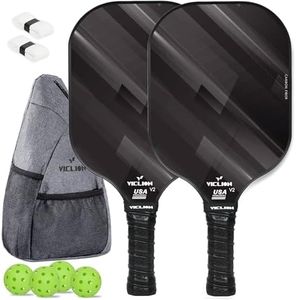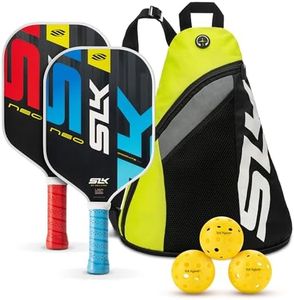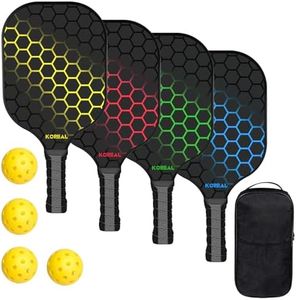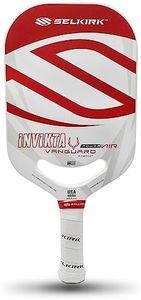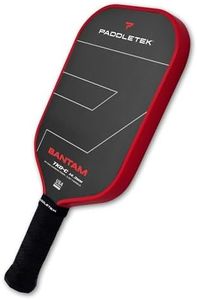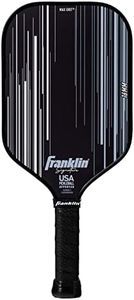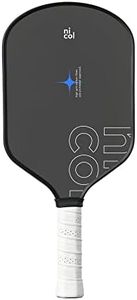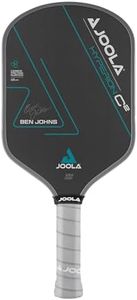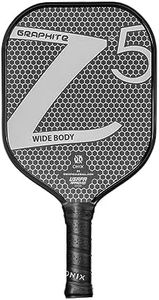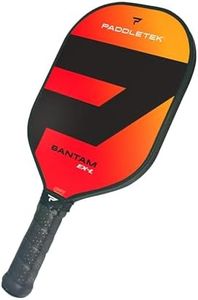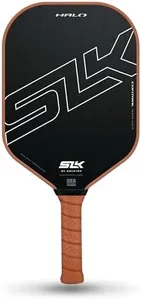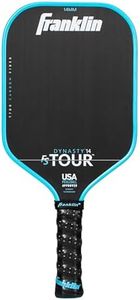We Use CookiesWe use cookies to enhance the security, performance,
functionality and for analytical and promotional activities. By continuing to browse this site you
are agreeing to our privacy policy
10 Best Pickleball Rackets
From leading brands and best sellers available on the web.By clicking on a link to a third party's website, log data is shared with that third party.
Buying Guide for the Best Pickleball Rackets
Choosing the right pickleball racket can make a huge difference in your playing experience, whether you’re just getting started or you’re looking to improve your game. The best paddle for you depends on your playing style, comfort, and your physical strengths or limitations. Understanding the main features of a racket helps you make a choice that fits your needs and supports your progression in the game.WeightThe weight of a pickleball racket is a fundamental factor that affects your swing, control, and comfort. Rackets generally range from lightweight (about 6-7.5 ounces), midweight (7.6-8.4 ounces), to heavyweight (8.5+ ounces). Lightweight rackets are easier to swing and great for quick hand movements, making them ideal for players who prioritize speed and longer playtime without fatigue. Heavyweight rackets provide more power and stability, helpful if you want stronger shots or have a slower swing. Midweight paddles are the middle ground, offering a balance between power and control. To pick the right one for you, consider how much strength you have in your arm and wrist and whether you prefer more control or power. If you’re new or not sure, starting with a midweight paddle is often a safe, versatile choice.
Grip SizeGrip size is the thickness of the handle of the racket, and it’s important for comfort and protecting your wrist and elbow from strain. Common sizes range from small (about 4 inches), medium (4.25 inches), to large (4.5 inches). A smaller grip offers more wrist action, helpful for spin and control, while a larger grip can reduce fatigue and provide more stability if you have larger hands. The right grip size depends on your hand size: if you can comfortably wrap your fingers around the handle without overlapping or a gap, the grip is likely right for you. Measuring your hand or trying out a few sizes in person can help you find the best fit.
Paddle MaterialPickleball paddles are made from a variety of materials, each impacting durability, control, and power. The main types are wood, composite, and graphite. Wood paddles are sturdy and inexpensive but often heavier and less responsive; they’re good for beginners who want to try the game affordably. Composite paddles use a mix of materials (such as fiberglass), giving a solid balance of power and control with a mid-range weight. Graphite paddles are light and offer a high degree of touch and responsiveness, sought after by players looking for finesse. To choose, consider if you favor performance and lighter weight (graphite), or a balance (composite), or simply want something basic (wood).
Paddle ShapeRackets come in a few different shapes, such as standard, elongated, or wide-body. Standard shapes are well-rounded for most users, offering a reliable blend of reach and maneuverability. Elongated paddles have a longer face, giving you extra reach for distant shots or net play, but may have a smaller sweet spot. Wide-body paddles have a broader surface, making it easier to hit the ball and are forgiving for beginners. Think about your typical playing style: if you play more at the net or want all-around performance, standard is safest; for extra reach, consider elongated.
Core MaterialThe core is the interior of the paddle, usually made from polymer, aluminum, or Nomex (a type of nylon). Polymer cores are soft, quiet, and often found in newer paddles; they’re suitable if you want more control and a quieter game. Aluminum cores are lighter and provide excellent control but generally less power. Nomex cores are harder and louder, giving more power and a crisp feel, which may suit aggressive players. Consider whether you value quiet, control, or power most when picking a core material.
